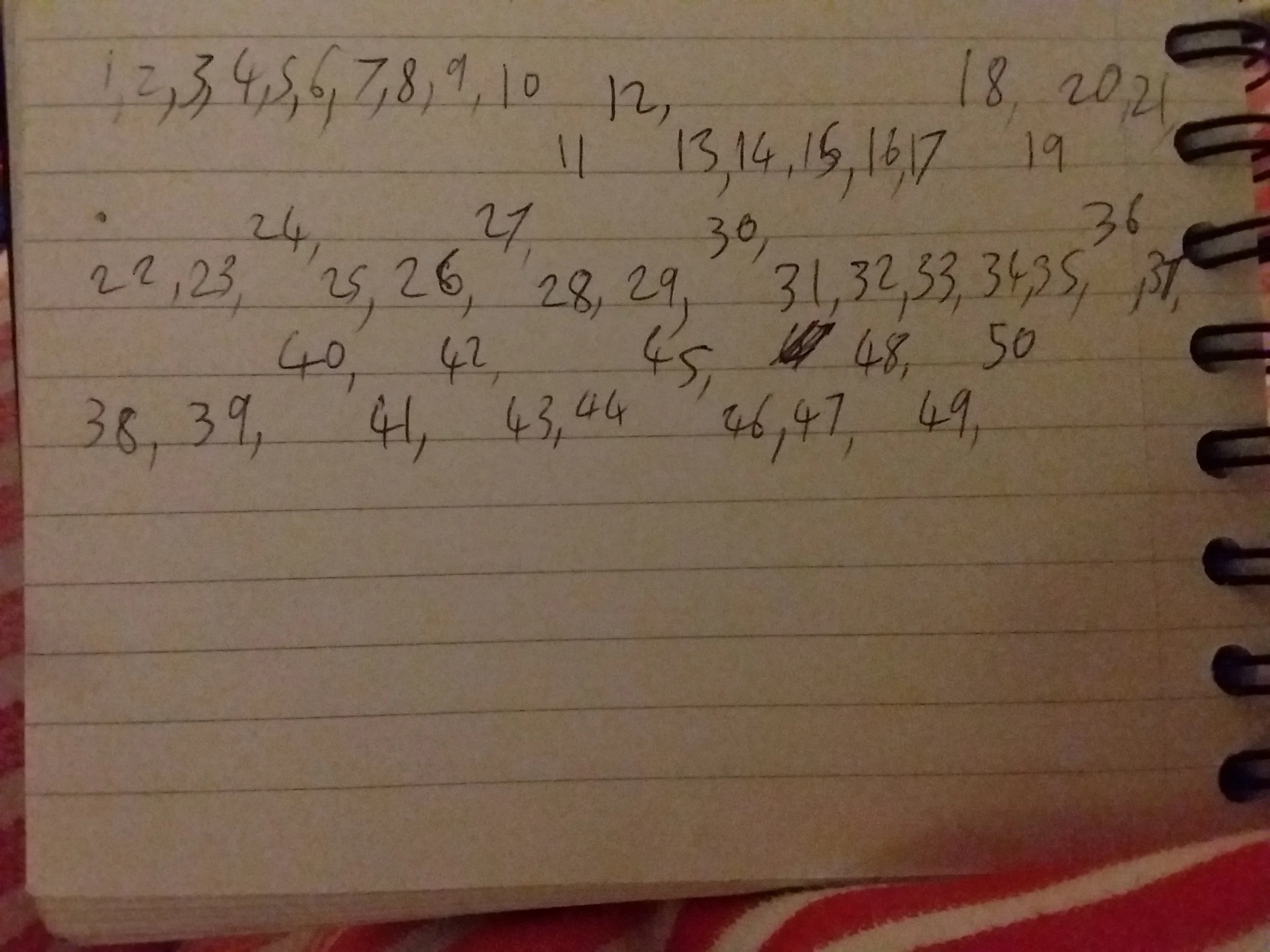An Infinite Orchard
You are standing in a grid of apple trees which stretches on forever in each direction. Each tree is 1m away from each of its neighbours in a square layout, so that running North to South and East to West there are straight lines of trees, apart from one missing spot where you are standing instead. Clearly if you face exactly East (or any cardinal direction) your view is blocked by a tree directly in front of you, but is there an angle where you can see through the trees forever? If the trees have any thickness then the answer is clearly no, but lets model them as infinitely thin and you as a single point.
Let's start you off looking East and turning slowly anticlockwise. As you slowly rotate your head 45 degrees until you are looking at the tree to your North-East, you will see an infinite number of trees, but is there a gap? Between any two trees the is at least one more tree, in fact there are an infinite number of trees between any two trees. So even with their thinness it seems like every direction will have a tree between them.
But this is where our intuition is incorrect. Let's think of it as a coordinate system with you at (0,0). Each tree corresponds to (x,y) where x and y are integers. The gradient of each line of sight write reaches a tree is therefore y/x where y and x are still integers. This means that for every rational number there is a tree that you can see; it is a one to one mapping. This corresponds to our observation from before that we can see at least one tree between every pair of trees, which is just a result talking about rational numbers.
However, the lines of sight that never hit a tree correspond with the numbers that can't be written in the form y/x where x and y are integers. These numbers are the irrationals and there are also an infinite number of them. However, this is a bigger sort of infinity. If you took any random real number then it will be an irrational number rather than a rational one with certainty. Their numbers dwarf the rationals.
Therefore, not only is it possible to look in a direction without a tree: if you span around to face a direction, it would be a mathematical certainty that you would not be looking at a tree (despite there being an infinite number of them). Infinities can be tricky like that.
Whenever I hear this thought experiment I always think of the analogous problem with stars. Looking out from the Earth in an infinite universe would the night’s sky be a uniform blanket of light with every line of sight reaching a star eventually. Once again the answer is no using the irrational number argument.
Ok, a puzzle to end. A farmer wants to plant 6 straight lines of 4 apple trees. How can they do this with fewer than 24 trees? Can you do it in 12? Hint below…
Hint: the straight lines of trees don't have to be parallel or perpendicular to each other. Answer below.








